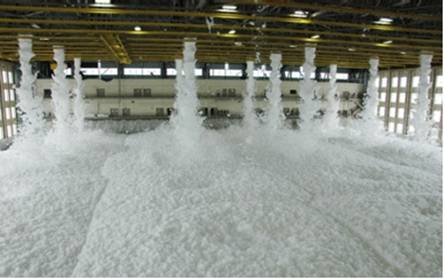
Incident Report Subject: US - CDI, EGLIN AFB ACCIDENTAL HIGH EXPANSION FOAM DISCHARGE AND FATALITY Date of Email report: Fri 21/03/2014 Report Detail:
Commanders have the inherent authority to conduct a Command Directed Investigation (CDI) to investigate matters under their command, unless pre-empted by higher authority. Pursuant to this authority, Major Gen Arnold W. Bunch Jr., Commander, Air Force Test Center, appointed Col Robert F. Weaver, II on 10 Jan14, to conduct the Investigation into all aspects of the facts and circumstances regarding the accidental activation of the fire suppression system in building 130 and the subsequent death of an Air Force contractor. The CDI was conducted from 13 Jan14, to 31 Jan 14 at Building 2, 96th Test Wing, Office of the Staff Judge Advocate, Eglin Air Force Base, Florida. Findings based on Investigation; Finding 1. Several factors combined to cause the unintended activation of the fire suppression system. The unusually cold temperatures caused part of the Inspector Test Station to freeze, which led to a pressure build up, which in turn caused a full-port ball valve (FBV) to crack, leading to the separation of the line. This created water flow within the lines which caused the HEF system to activate. Finally, the relatively short time between audible alarm and system activation combined with a lack of awareness of the operation of the abort functionality of the HEF system contributed to two separate failed attempts to abort the HEF activation. Finding 2. Several factors combined to cause the death of CONTRACTOR 1. These included the decision by him and others to enter Hangar 130 contrary to instructions from on-scene emergency personnel, the four contractors taking the elevator to the floor of the hangar and the ensuing disorientation that resulted when they became engulfed in the foam. While the precise mechanism of CONTRACTOR 1’s death cannot be stated without access to the autopsy results, it is apparent that his entry into the foam-immersed environment brought about his death. Finding 3: There are mitigation measures which can greatly reduce the potential for similar incidents in the future. Potential mitigation measures can be divided into three areas: changes to HEF suppression system configuration, incident and rescue operations and HEF equipped hangar worker training.
Additional Documentation:
|

